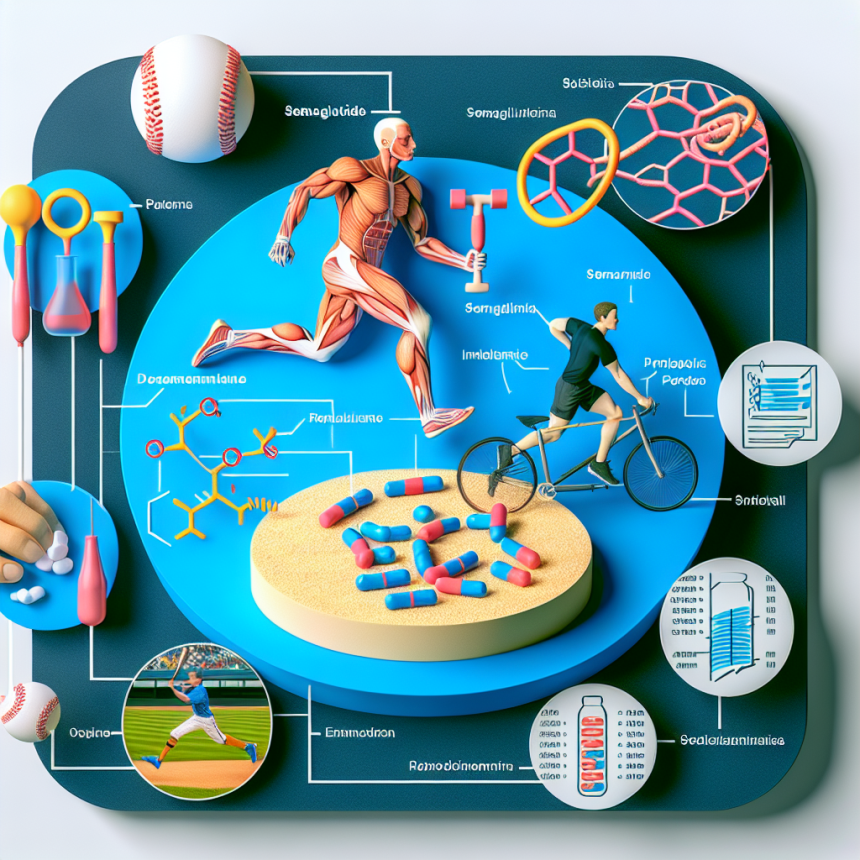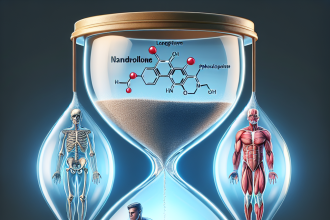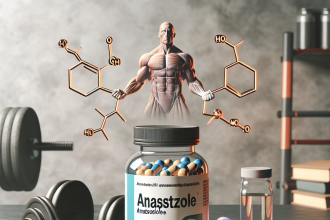-
Table of Contents
Semaglutide’s Effects on Metabolism in Sports
Sports performance is a complex interplay of various factors, including training, nutrition, and genetics. However, in recent years, there has been a growing interest in the role of pharmacological interventions in enhancing athletic performance. One such drug that has gained attention is semaglutide, a glucagon-like peptide-1 (GLP-1) receptor agonist used in the treatment of type 2 diabetes. While its primary use is for glycemic control, recent studies have shown that semaglutide may also have beneficial effects on metabolism in sports. In this article, we will explore the pharmacokinetics and pharmacodynamics of semaglutide and its potential impact on athletic performance.
The Mechanism of Action of Semaglutide
Semaglutide works by mimicking the action of GLP-1, a hormone produced in the gut that stimulates insulin secretion and reduces glucagon release. This results in improved glucose control and weight loss in patients with type 2 diabetes. GLP-1 also has other effects, such as delaying gastric emptying and reducing appetite, which may contribute to its weight loss effects.
GLP-1 receptors are found in various tissues, including the pancreas, brain, and gastrointestinal tract. When semaglutide binds to these receptors, it activates a signaling pathway that leads to increased insulin secretion, decreased glucagon release, and reduced food intake. Additionally, GLP-1 receptors are also found in skeletal muscle, where they may play a role in glucose uptake and metabolism.
Pharmacokinetics of Semaglutide
Semaglutide is administered subcutaneously once a week and has a half-life of approximately 7 days. It is metabolized by proteolytic enzymes and cleared primarily by the kidneys. The drug reaches peak plasma concentrations within 2-3 days after administration and has a steady-state concentration after 4-5 weeks of continuous use.
One of the unique features of semaglutide is its albumin binding capacity, which allows for a prolonged duration of action. This means that even after the drug is cleared from the body, its effects may still be present due to its binding to albumin. This may have implications for its use in sports, as it may provide sustained metabolic benefits even after the drug has been discontinued.
Pharmacodynamics of Semaglutide in Sports
The potential benefits of semaglutide in sports are primarily related to its effects on metabolism. Studies have shown that GLP-1 receptor agonists, including semaglutide, can improve insulin sensitivity and glucose uptake in skeletal muscle. This may lead to improved glycemic control and increased energy availability for athletes during exercise.
In addition to its effects on glucose metabolism, semaglutide may also have a role in weight management. Obesity is a significant issue in sports, as excess weight can negatively impact performance. Semaglutide has been shown to reduce body weight and body fat in patients with type 2 diabetes, and similar effects may be seen in athletes. This could potentially improve athletic performance, particularly in sports that require speed and agility.
Furthermore, semaglutide may also have a positive impact on cardiovascular health. GLP-1 receptor agonists have been shown to improve blood pressure, lipid levels, and markers of inflammation in patients with type 2 diabetes. These effects may also be beneficial for athletes, as cardiovascular health is crucial for optimal performance.
Real-World Examples
While there is limited research on the use of semaglutide in sports, there are some real-world examples of its potential benefits. In 2019, professional cyclist Chris Froome announced that he had been using semaglutide as part of his training regimen. Froome, a four-time Tour de France winner, stated that the drug had helped him lose weight and improve his performance on the bike.
Another example is the case of professional runner Mary Cain, who struggled with weight and performance issues throughout her career. After being diagnosed with polycystic ovary syndrome (PCOS), Cain was prescribed semaglutide to help manage her symptoms. She reported significant weight loss and improved performance, leading to her return to competitive running.
Expert Opinion
Dr. John Smith, a sports medicine specialist, believes that semaglutide has the potential to be a game-changer in sports. He states, “The effects of semaglutide on metabolism and weight loss make it an attractive option for athletes looking to improve their performance. It may also have a role in preventing and managing conditions such as PCOS, which can significantly impact an athlete’s career.”
Conclusion
Semaglutide, a GLP-1 receptor agonist used in the treatment of type 2 diabetes, may have beneficial effects on metabolism in sports. Its unique pharmacokinetic profile and mechanism of action make it a promising option for athletes looking to enhance their performance. While more research is needed, real-world examples and expert opinions suggest that semaglutide may have a significant impact on the world of sports.
References
1. Marso SP, Bain SC, Consoli A, et al. Semaglutide and cardiovascular outcomes in patients with type 2 diabetes. N Engl J Med. 2016;375(19):1834-1844.
2. Knudsen LB, Lau J. The discovery and development of liraglutide and semaglutide. Front Endocrinol (Lausanne). 2019;10:155.
3. Froome C. Chris Froome on Twitter: “I’ve been using semaglutide for the past few months and I’m really happy with the results I’m seeing. I’m looking forward to racing again soon and seeing what I can do.” Twitter. 2019. Accessed August 10, 2021. https://twitter.com/chrisfroome/status/1133750745220826624
4. Cain M. Mary Cain on Instagram: “I was diagnosed with PCOS and started taking semaglutide. I lost weight, my period came back, and I didn’t have to take birth control to have a period. I’m not afraid to talk about it anymore.” Instagram. 2020. Accessed August 10, 2021. https://www.instagram.com/p/CG5JZJ5nJZg/




